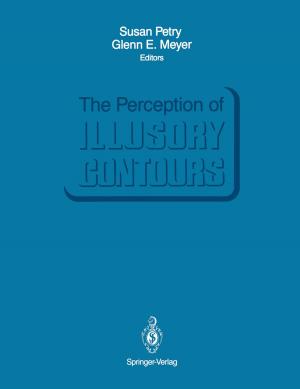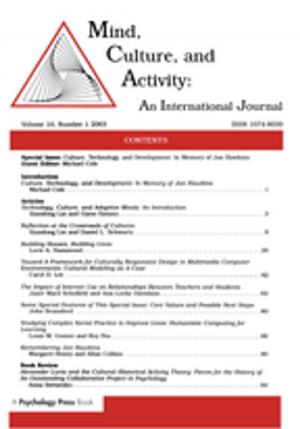The Mind Pyramid
Nonfiction, Religion & Spirituality, Philosophy, Epistemology, Health & Well Being, Psychology, Neuropsychology, Cognitive Psychology| Author: | Mai Saleh | ISBN: | 9781386988373 |
| Publisher: | Mai Saleh | Publication: | December 14, 2017 |
| Imprint: | Language: | English |
| Author: | Mai Saleh |
| ISBN: | 9781386988373 |
| Publisher: | Mai Saleh |
| Publication: | December 14, 2017 |
| Imprint: | |
| Language: | English |
This work is a trail to navigate inside the human mind. How we reason, judge and behave is the influence of our deep understanding of the world arround us. People differ greatly, but how and why is still a big question. In this book, I am expressing just a part of my broader speculation on mind and truth after individual differences.
The Mind Pyramid postulates that concept formation depends on the two psychological functions; perception and thinking. Perception is responsible for capturing information from the surroundings, and converting them into thoughts. Thinking as a following step, is responsible for converting thoughts into meaningful mental constructs. Such constructs represent new pieces of knowledge or concepts. Concepts, keep on growing through perception and thinking to produce more complex constructs. Old and new constructs for each individual build up his gestalt which is the reservoir for all concepts.
The Mind Pyramid describes perception in terms of Aristotle's speculations on passive mind and the process perception and describes thinking with accordance to Aristotle's active mind and the process thinking.
Three languages of thought are also introduced by this work that explain how sensory stimuli are transfered into a suitable form that could be operated upon by perception and thinking.
Mental representation as described here is tied to the preferential mode of perception and thinking and differs by the difference of the prefered Intellectual style. Each style has his own language of thought, type of mental schemas and gestalt composition. Similarly, specific memory systems inside the mysterious human mind are responsible for building each type of image schemas.
Before we get in depth with specific ideas represented in this book, I prefer to give a short account on what I am handling and what I need to transfer to my readers. A lot of scientific terminologies, definitions and theories describe our mind. And a lot of sciences, disciplines, research approaches and valuable findings serve the field of cognition. Yet, the many details here and there, and the various speculations and manifestations need to be gathered in an integrated body that has a definite shape and measurable dimensions. The whole picture of how our minds works must be drown as a big picture palatable for any simple eye, with detailed features that allow the specialized eye to recognize more knowledge that it seeks.
Aristotle mind as introduced in this book is a completely different understanding of Aristotle description of the Active and Passive minds. The use of the concept of hylomorphism is also new. The hierarchical pyramidal shape provided, is an innovative skeleton for cognition. Here I convert this extremely abstract process; cognition into a concrete body; the mind pyramid. Inside this pyramid, there are many pathways that link between different compartments. Thoughts travel in its tunnels, get up on its stairs and sleep peacefully in the vacancies, rooms and waiting areas. Thoughts differ in nature, wearing characteristic types of cloth and moving in different paths. Thoughts are alive, they interact, struggle for life and compete to predominate. The world of thoughts is the mind and this mind has firm rules that mange attitudes of thoughts. I need to take you for a journey inside the mind pyramid; the real world of thoughts and the hidden power guiding our behaviors, beliefs and decisions.
In the first chapter I am going to tell the whole story simply and in brief. The next chapter represent a scientifically written manuscript that I tried my best to publish in scholarly journals but in vain. At the end of the book I introduce some of the many controversial and disappointing opinions that I received along my successive submissions. Hope you find this book interesting and wishing you good time with my book.
This work is a trail to navigate inside the human mind. How we reason, judge and behave is the influence of our deep understanding of the world arround us. People differ greatly, but how and why is still a big question. In this book, I am expressing just a part of my broader speculation on mind and truth after individual differences.
The Mind Pyramid postulates that concept formation depends on the two psychological functions; perception and thinking. Perception is responsible for capturing information from the surroundings, and converting them into thoughts. Thinking as a following step, is responsible for converting thoughts into meaningful mental constructs. Such constructs represent new pieces of knowledge or concepts. Concepts, keep on growing through perception and thinking to produce more complex constructs. Old and new constructs for each individual build up his gestalt which is the reservoir for all concepts.
The Mind Pyramid describes perception in terms of Aristotle's speculations on passive mind and the process perception and describes thinking with accordance to Aristotle's active mind and the process thinking.
Three languages of thought are also introduced by this work that explain how sensory stimuli are transfered into a suitable form that could be operated upon by perception and thinking.
Mental representation as described here is tied to the preferential mode of perception and thinking and differs by the difference of the prefered Intellectual style. Each style has his own language of thought, type of mental schemas and gestalt composition. Similarly, specific memory systems inside the mysterious human mind are responsible for building each type of image schemas.
Before we get in depth with specific ideas represented in this book, I prefer to give a short account on what I am handling and what I need to transfer to my readers. A lot of scientific terminologies, definitions and theories describe our mind. And a lot of sciences, disciplines, research approaches and valuable findings serve the field of cognition. Yet, the many details here and there, and the various speculations and manifestations need to be gathered in an integrated body that has a definite shape and measurable dimensions. The whole picture of how our minds works must be drown as a big picture palatable for any simple eye, with detailed features that allow the specialized eye to recognize more knowledge that it seeks.
Aristotle mind as introduced in this book is a completely different understanding of Aristotle description of the Active and Passive minds. The use of the concept of hylomorphism is also new. The hierarchical pyramidal shape provided, is an innovative skeleton for cognition. Here I convert this extremely abstract process; cognition into a concrete body; the mind pyramid. Inside this pyramid, there are many pathways that link between different compartments. Thoughts travel in its tunnels, get up on its stairs and sleep peacefully in the vacancies, rooms and waiting areas. Thoughts differ in nature, wearing characteristic types of cloth and moving in different paths. Thoughts are alive, they interact, struggle for life and compete to predominate. The world of thoughts is the mind and this mind has firm rules that mange attitudes of thoughts. I need to take you for a journey inside the mind pyramid; the real world of thoughts and the hidden power guiding our behaviors, beliefs and decisions.
In the first chapter I am going to tell the whole story simply and in brief. The next chapter represent a scientifically written manuscript that I tried my best to publish in scholarly journals but in vain. At the end of the book I introduce some of the many controversial and disappointing opinions that I received along my successive submissions. Hope you find this book interesting and wishing you good time with my book.















